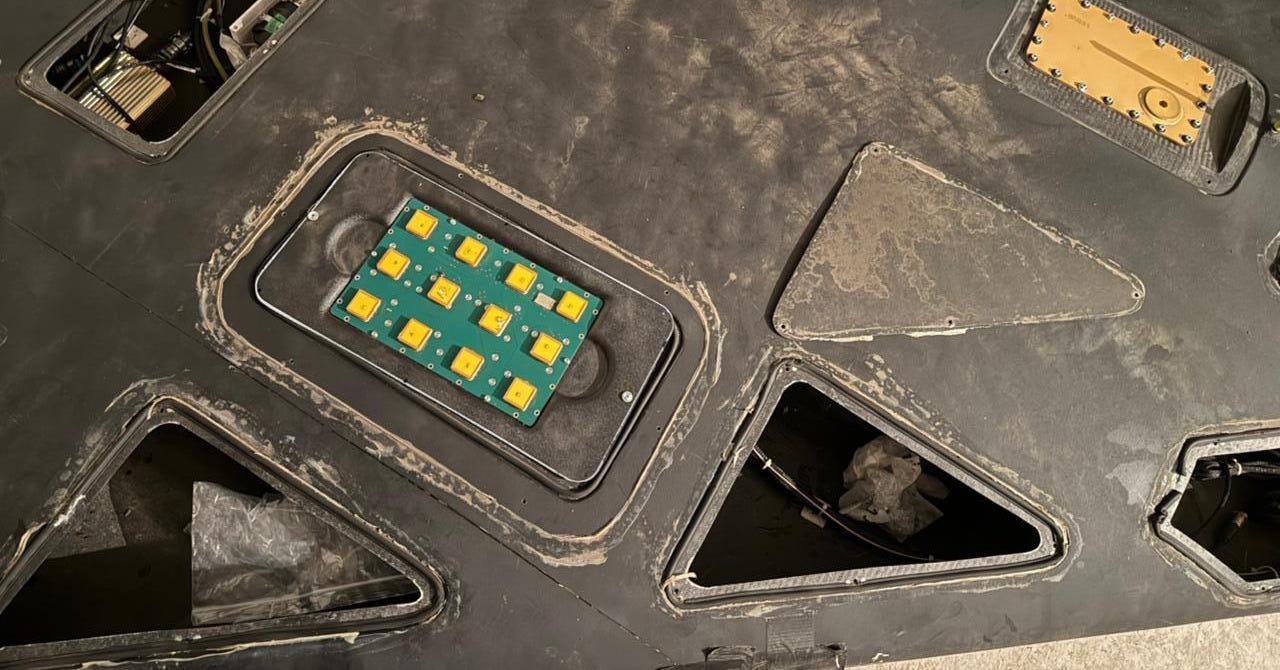A Proficient Chinese Spy Helped a Ukrainian Tech Team Jam Russian Drones
The spy stole Shahed drone navigation tech specs 'within weeks'
In mid-August 2022, the first Iranian-designed Shahed attack drones began appearing in the sky over Ukraine. Thirty-four months later, Russian forces are launching more than 100 of the 440-pound, propeller-driven, flying munitions every day.
Stopping the explosive Shaheds is one of Ukraine’s most urgent priorities. Which is why, in late 2023, an elite Ukrainian tech team recruited a very skilled Chinese spy. The spy swiftly stole hardware, documents and software that helped the Night Watch team develop a new jammer that could force the Shaheds off course.
Thanks to that spy, many Shaheds “crashed in fields, lakes—or even drifted into Romania and Moldova,” said “Alchemist,” the commander of the expanding Night Watch team.
What’s most impressive is how quickly the agent worked. They got their hands on a receiver, associated factory documents and computer code for the latest Shahed models “within weeks” of Night Watch recruiting them, Alchemist said.
Each Shahed ranges as far a 1,600 miles with a 110-pound warhead that can kill and maim troops and civilians, destroy homes and businesses and damage power plants and factories. (See video of Shahed strike, below.)
“Russian missile and Shahed strikes drown out the efforts of the United States and others around the world to force Russia into peace,” Ukrainian Pres. Volodymyr Zelensky wrote after 250 Shaheds pummeled Ukrainian cities on June 10, injuring 13 people and killing three.
Night Watch has been jamming Shaheds since early 2023, using its Lima electronic warfare system. The team scored its first Shahed takedown on May 28, 2023. A month later on June 24, 2023, Night Watch won a Shahed jamming competition organized by the Ministry of Digital Transformation, the General Staff and the Ministry of Defense in Kyiv. The team took home $1 million.
It was easier said than done. Russia’s Shaheds have “controlled reception pattern antennas,” or CRPA, that receive signals on multiple different channels—and can be hard to jam.
The trick, Alchemist said, is “arranging E.W. emitters in squares or honeycomb patterns, emitting from varied angles. The number of emitters had to match or exceed the number of CRPA antenna elements” on the Shahed.
Drones versus jammers
But the Russians are constantly upgrading their Shaheds to counteract Ukrainian jamming. In August 2023, while using its jammers to protect the port of Reni in southern Ukraine, Night Watch sensed a change.
“We deployed a network of systems—but during the first attack, 25% of Shaheds penetrated,” Alchemist said. “We analyzed debris and discovered the drones used receivers on L1, L2 and L5 bands, not just L1. They were new K-series Shaheds.”
Night Watch needed a new version of its jammer to defeat the new version of the $50,000 Shahed, which Russian industry now produces at a combined rate of thousands of copies per month.
A Chinese company maufactured the drone’s navigation receiver. The most straightforward way for Night Watch to understand the K-series Shahed’s vulnerabilities would be to simply buy one of the Chinese receivers and disassemble it.
Night Watch inquired. “The Chinese firm refused,” Alchemist recalled.
So Night Watch got creative. Taking advantage of the Ukrainian law that empowers members of the Ukrainian Territorial Defense Forces to recruit foreign spies, Night Watch hired an inside man (or woman) at the Chinese companty.
Weeks later, the spy delivered the hardware, documents and software Night Watch needed. “We then produced an upgraded Lima version jamming all three [satellite communication] bands,” Alchemist said. “Deployment around Reni caused Shaheds to fail.”
It wasn’t the end of the life-and-death drone contest over Ukraine. It was, in fact, just the beginning. With ever-better Shaheds and other drones and cruise missiles, Russia not only continues striking at Ukraine—it’s escalating the strikes.
Surface-to-air missiles, interceptor drones, gun teams and other kinetic defenses are too sparse, too expensive and too prone to missing their shot. “Jamming is the only economically viable solution” to the swarms of Shaheds darkening the Ukrainian sky.
But the jammers’ developers can’t rest. They must constantly improve their countermeasures to keep up with Russian countercountermeasures. Sometimes that requires espionage.
It’s unclear whether Night Watch still has that Chinese spy on its payroll. But it’s a safe bet the team is always looking for an inside man who can betray the Shahed’s secrets.
Read more:
Russia Has 10 Gunpowder Factories. Ukraine's Drones Just Blew Up One Of Them.
The 14th UAS Regiment, Ukraine’s elite strike drone unit, has blown up one of Russia’s gunpowder factories: the Tambov Gunpowder Plant in Kotovsk, 230 miles from the front line in Ukraine.






